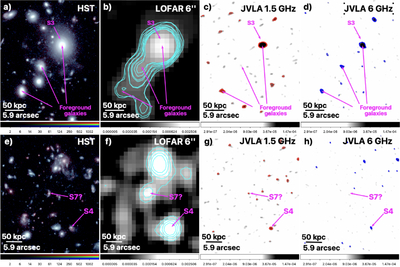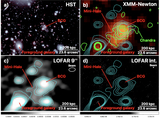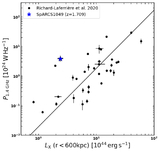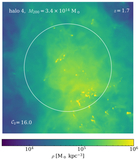Image Details

Caption: Figure B1.
Top: zoom-in on the foreground z ∼ 0.35 galaxy located to the southeast of SPARCS1049+56 and labeled S3 in Figure 3. (a) Composite HST image (F105W in blue and green; F160W in red), highlighting foreground galaxies, including S3. (b) 144 MHz LOFAR low-resolution image with a beam size of 6﹩\mathop{.}\limits^{\unicode{x02033}}﹩0 by 6﹩\mathop{.}\limits^{\unicode{x02033}}﹩0, where contours are 4σrms, 6σrms, 8σrms, and 10σrms and σrms = 33 μJy beam−1. (c) JVLA 1.5 GHz image from A. Trudeau et al. (2019), with contours at 3σrms, 4σrms, and 5σrms, where σrms = 10.5 μJy beam−1. (d) JVLA 6 GHz image from A. Trudeau et al. (2019), with contours at 3σrms, 4σrms, and 5σrms, where σrms = 3 μJy beam−1. Although LOFAR looks like a one-sided jet, the combined JVLA and HST images show that the radio emission originates from multiple foreground galaxies and their associated AGN. Bottom: same as the top row, but zoomed-in on the source S4 and the source S7? from Figure 3. Color bars are included; radio image units are Jy beam−1.
Copyright and Terms & Conditions
© 2025. The Author(s). Published by the American Astronomical Society.









